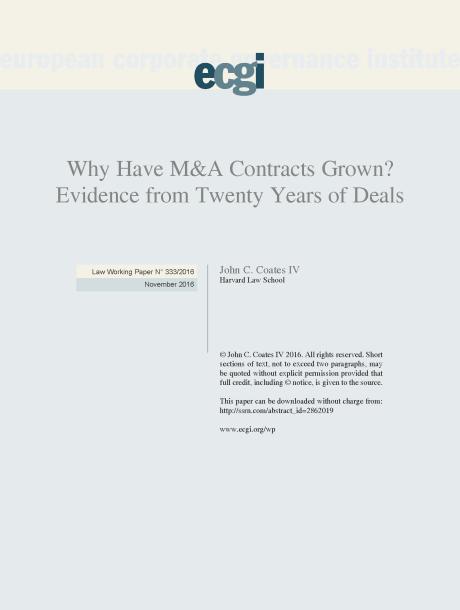
Why Have M&A Contracts Grown? Evidence from Twenty Years of Deals
Abstract
Over 20 years, M&A contracts have more than doubled in size ? from 35 to 88 single-spaced pages in this paper?s font. They have also grown significantly in linguistic complexity ? from post-graduate ?grade 20? to post-doctoral ?grade 30?. A substantial portion (lower bound ~20%) of the growth consists not of mere verbiage but of substantive new terms. These include rational reactions to new legal risks (e.g., SOX, FCPA enforcement, shareholder litigation) as well as to changes in deal and financing markets (e.g., financing conditions, financing covenants, and cooperation covenants; and reverse termination fees). New contract language also includes dispute resolution provisions (e.g., jury waivers, forum selection clauses) that are puzzling not for appearing new but in why they were ever absent. A final, notable set of changes reflect innovative deal terms, such as top-up options, which are associated with a 18-day (~30%) fall in time-to-completion and a 6% improvement in completion rates. Exploratory in nature, this paper frames a variety of questions about how an important class of highly negotiated contracts evolves over time.





